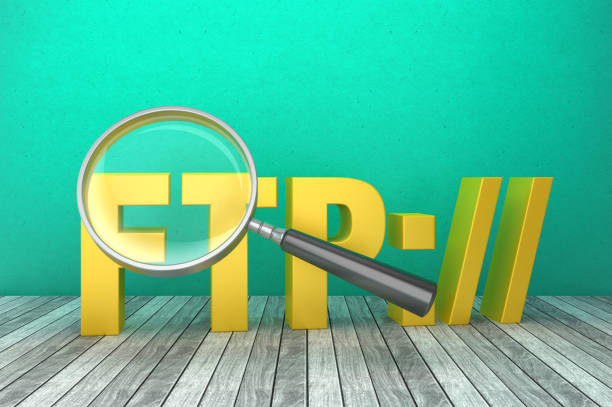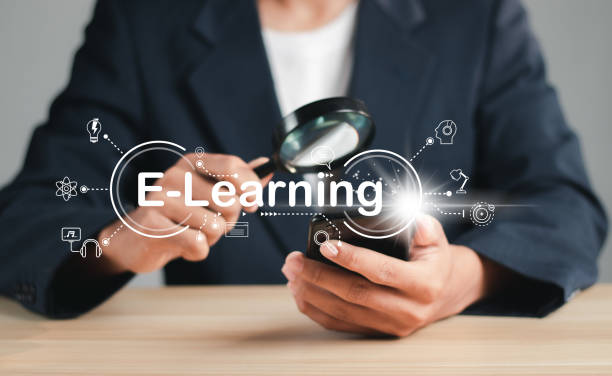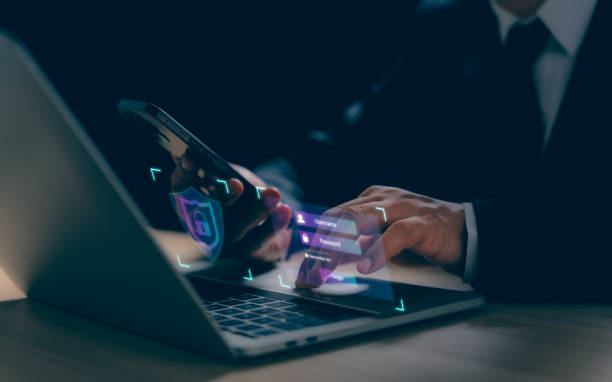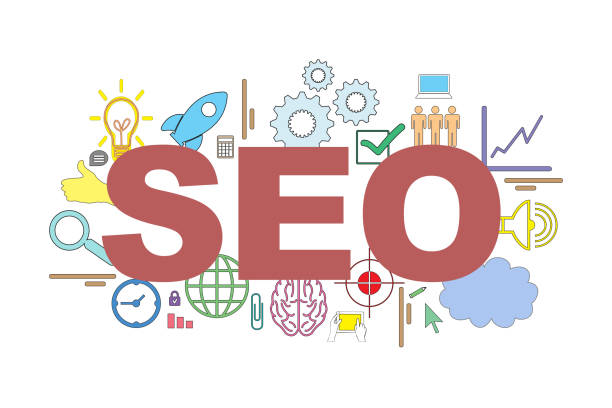What is On-Page SEO and Why Does It Matter?
#On-Page SEO is a set of techniques and actions you perform within your website to improve your site’s ranking in search engines like Google.
The main goal of On-Page SEO is to optimize the content and structure of the site for better understanding by search engines and to provide a better user experience for visitors.
The importance of On-Page SEO lies in the fact that it helps search engines better understand the topic and content of your site’s pages, and as a result, display your site in search results for relevant terms.
A website with strong On-Page SEO has a better chance of attracting organic traffic and converting visitors into customers.
On-Page SEO includes optimizing titles, meta descriptions, content, images, URL structure, internal links, and site loading speed.
In other words, On-Page SEO means improving all the elements within your website that can affect your site’s ranking and visibility in search results.
Website optimization for search engines not only increases traffic but also improves user experience, which in turn helps increase conversion rates and customer retention.
Ultimately, On-Page SEO is one of the main pillars of a successful SEO strategy, and without it, achieving high rankings in search engines will be very difficult.
To start On-Page SEO, you need to have a complete understanding of search engine algorithms and user needs, and optimize your site accordingly.
Is your company’s website as professional and trustworthy as it should be? Create an online presence that represents your credibility and attracts more customers with professional corporate website design by Rasaweb.
✅ Build a powerful and professional image of your brand
✅ Convert visitors into real customers
⚡ Get a free consultation now!
Keyword Research and Its Role in On-Page SEO
Keyword research is one of the most important steps in On-Page SEO.
Choosing the right keywords helps you optimize your content for the terms that users are actually searching for.
This will cause your site to be displayed in search results for relevant terms and attract more targeted traffic.
To start keyword research, you should first make a list of topics related to your business.
Then, use keyword research tools like Ahrefs, Moz Keyword Explorer, or Ubersuggest to find relevant keywords with high search volume and low competition.
Click here to preview your posts with PRO themes ››
When choosing keywords, pay attention to factors like user search intent.
Is the user looking for information, or are they intending to buy? The selected keywords should match the user’s intent.
Also, consider long-tail keywords.
These keywords usually have less search volume, but they are more targeted and have less competition.
After selecting keywords, you should use them naturally in your content.
Avoid keyword stuffing, as this can damage your site’s ranking.
Use keywords in titles, meta descriptions, body text, and image alt tags.
Optimizing Titles and Meta Descriptions
Titles and meta descriptions are two important elements in On-Page SEO that help search engines and users better understand your page’s content.
The page title (Title Tag) should be descriptive and attractive and include the page’s main keyword.
The length of the page title should be between 50 and 60 characters so that it is fully displayed in the search results.
Meta descriptions should also provide a summary of the page’s content and encourage users to click.
The length of the meta description should be between 150 and 160 characters.
Writing attractive and relevant titles and meta descriptions can help increase click-through rate (CTR) and improve your site’s ranking.
Use relevant keywords in titles and meta descriptions, but avoid keyword stuffing.
The titles and meta descriptions of each page should be unique to avoid creating duplicate content.
Optimizing website titles and meta descriptions is an important step in SEO.
| Element | Description | Best Practice |
|---|---|---|
| Title Tag | The page title that is displayed in search results. | Contains the main keyword, attractive and descriptive, length between 50 and 60 characters |
| Meta Description | A summary of the page’s content that is displayed below the title in search results. | Attractive and relevant summary, encourages clicks, length between 150 and 160 characters |
Content Optimization and Quality Content Production
Producing quality content and optimizing it is one of the most important factors in On-Page SEO.
Quality content should be valuable, relevant, and engaging for the audience.
Also, the content should fully answer users’ questions and needs.
To optimize content, you should first use relevant keywords in your content.
Use keywords naturally in titles, subtitles, body text, and image alt tags.
Avoid keyword stuffing.
Update your content regularly to keep it fresher and more relevant for search engines and users.
Divide your content into smaller sections and use subtitles, lists, and images to improve readability.
Use internal links to connect related pages on your site.
This helps search engines better understand your site structure and helps users easily navigate your site.
You can also use technical SEO.
In addition, make sure your content is unique and non-duplicate.
Avoid copying content from other sites, as this can damage your site’s ranking.
Optimize your content for mobile so that mobile users can easily access it.
Increase the loading speed of your site’s pages, as slow loading speed can reduce your site’s ranking.
Finally, regularly review and analyze your content to identify its strengths and weaknesses and apply the necessary improvements.
By producing quality content and optimizing it, you can increase your site’s organic traffic and improve your site’s ranking in search engines.
Is your current online store design causing you to lose customers and sales?
Rasaweb is your solution with modern and user-friendly online store designs!
✅ Significant increase in conversion rates and sales
✅ Creating strong branding and gaining customer trust
⚡ Get a free consultation on online store design from Rasaweb!
Image and Video Optimization
Optimizing images and videos is another important aspect of On-Page SEO.
Images and videos can make your content more engaging and useful, but if they are not properly optimized, they can damage your site’s ranking.
To optimize images, you should first use high-quality images.
Low-quality images can reduce user confidence in your site.
Reduce the file size of images to increase the loading speed of your site’s pages.
Use image compression tools to reduce the size of images.
Choose a descriptive file name for images and use relevant keywords in the file name.
Use alt tags to describe images.
Alt tags help search engines understand the topic of images and help users know what’s in the image if it doesn’t load.
To optimize videos, host videos on your own site to have more control over them.
You can also use video hosting platforms like YouTube or Vimeo, but make sure the videos are properly optimized.
Write descriptive titles and descriptions for videos and use relevant keywords in them.
Use appropriate tags for videos to help search engines understand the topic of the videos.
Choose an attractive thumbnail image for videos to encourage users to watch.
By optimizing images and videos, you can increase your site’s traffic and improve the user experience.
Internal and External Linking
Internal and external linking plays an important role in On-Page SEO.
Internal linking means creating links between different pages of your site.
This helps search engines better understand your site structure and helps users easily navigate your site.
Internal linking can also help increase the ranking of important pages on your site.
For internal linking, you should first identify the related pages of your site.
Then, use relevant keywords in the link text (Anchor Text).
The number of internal links on each page should be balanced.
Avoid linking to unrelated pages.
External linking means getting links from other sites.
External links can help increase your site’s credibility and ranking.
To get external links, you should first produce quality content that is attractive to other sites.
Then, contact related sites and ask them to link to your site.
Be active on social media and share your content.
Participate in forums and communities related to your business and answer users’ questions.
If possible, write guest articles on other sites and link to your site.
External linking is a time-consuming process, but with patience and perseverance, you can get quality links and improve your site’s ranking.
Optimizing URL Structure
URL structure is an important factor in On-Page SEO that helps search engines and users better understand your page’s content.
Your site’s URLs should be short, descriptive, and contain relevant keywords.
Avoid using long and complex URLs.
URLs should be readable and easily understood.
Avoid using meaningless numbers and letters in URLs.
URLs should be separated by hyphens (-).
Avoid using underscores (_) in URLs.
URLs should be written in lowercase.
Avoid using uppercase letters in URLs.
URLs should be consistent with your site structure.
The URLs of each page should be unique to avoid creating duplicate content.
For example, instead of using an inappropriate URL like example.com/page?id=123, use an appropriate URL like example.com/seo-internal.
By optimizing the URL structure, you can help search engines better understand your site’s content and help users easily find the pages they are looking for.
URL optimization is one of the important things that is paid attention to in site optimization.
| Feature | Description | Best Practice |
|---|---|---|
| URL Length | The URL length should be short and concise. | Maximum 75 characters |
| Keywords | The URL should include keywords related to the page’s content. | Using main and secondary keywords |
| Readability | The URL should be readable and understandable. | Using hyphens (-) to separate words |
| Lowercase | The URL should be written in lowercase. | Not using uppercase letters |
Optimizing Site Loading Speed
Site loading speed is an important factor in On-Page SEO and user experience.
Slow loading speed can reduce your site’s ranking in search engines and cause users to leave your site.
To optimize site loading speed, you should first check your site’s loading speed.
Use tools like Google PageSpeed Insights or GTmetrix to check your site’s loading speed and identify loading speed problems.
Then, fix the loading speed problems.
Optimize images, compress CSS and JavaScript files, use cache, and use a quality web hosting service.
In addition, use a Content Delivery Network (CDN) to store your site’s content on different servers around the world.
This allows your site’s users to quickly access your site’s content.
Regularly check your site’s loading speed and apply the necessary improvements.
By optimizing site loading speed, you can improve your site’s ranking in search engines and improve the user experience.
SEO is not limited to these and there are many algorithms.
Does your company’s website create a professional and lasting first impression on potential customers? Rasaweb, with its professional corporate website design, not only represents the credibility of your brand but also opens a path for the growth of your business.
✅ Create a powerful and reliable brand image
✅ Attract target customers and increase sales
⚡ Get a free consultation
Optimizing Your Site for Mobile
Optimizing your site for mobile is one of the most essential aspects of On-Page SEO in today’s world.
With the increasing use of mobile devices to search the internet, Google and other search engines place a great deal of importance on sites that are optimized for mobile.
A mobile-optimized site should have responsive design, meaning the site’s design should automatically adapt to the screen size of different devices (mobile, tablet, desktop).
Fonts and buttons should be large enough so that mobile users can easily use them.
The site’s loading speed should be high on mobile.
The site’s content should be optimized for mobile, meaning it should be concise and useful and easy to read.
To optimize your site for mobile, you should first use a responsive template.
Then, check your site’s loading speed on mobile and fix any loading speed problems.
Make the fonts and buttons large enough.
Optimize your site’s content for mobile.
Use the Google Mobile-Friendly Test Tool to make sure your site is optimized for mobile.
By optimizing your site for mobile, you can improve your site’s ranking in search engines and improve the user experience.
Sites that are not responsive are not shown in the results.
Continuous Review and Improvement of On-Page SEO
On-Page SEO is an ongoing process and requires continuous review and improvement.
After making changes to your site, you should regularly review the results and make the necessary improvements.
Use tools like Google Search Console and Google Analytics to check your site’s traffic, identify the keywords that users use to reach your site, and find technical problems with your site.
Check your site’s ranking for important keywords and try to improve your site’s ranking.
Check the click-through rate (CTR) of your site’s pages and try to increase the click-through rate of your pages.
Check the conversion rate of your site and try to increase your site’s conversion rate.
Regularly update your site’s content and produce new content.
Check your site’s internal and external links and fix broken links.
Check your site’s loading speed and make the necessary improvements.
By continuously reviewing and improving On-Page SEO, you can improve your site’s ranking in search engines and increase your site’s organic traffic.
SEO is a race that has no end and you should always be improving it.
On-page SEO, along with off-page SEO and technical SEO, helps you achieve your goal.
On-page SEO is a science and requires knowledge and experience.
Frequently Asked Questions
| Number | Question | Answer |
|---|---|---|
| 1 | What is On-Page SEO? | On-page SEO refers to the set of actions that are performed within a website to optimize its pages in order to achieve a better ranking in search results. |
| 2 | What is the most important factor in on-page SEO? | High-quality, relevant, and comprehensive content that meets the user’s needs is the most important factor in on-page SEO. |
| 3 | What role does the Title Tag play in on-page SEO? | The title tag is one of the most important factors that tells search engines and users what the page content is about. It should include the main keyword and be attractive. |
| 4 | How important is the Meta Description tag? | Although it does not directly affect ranking, it is very effective on the click-through rate (CTR) in search results and encourages users to visit the page. |
| 5 | How is image optimization done in on-page SEO? | By using appropriate alt tags, compressing image size to increase loading speed, and naming the image file meaningfully. |
| 6 | What is the importance of using headings (H1, H2, H3) in on-page SEO? | Headings help structure content, increase readability, and help search engines understand the hierarchy and subtopics of content. |
| 7 | What does Internal Linking mean and what are its benefits? | Internal linking means creating links between different pages of a website. This helps to distribute credit, improve user navigation, and help search engine crawling. |
| 8 | Where should the Focus Keyword be placed on the page? | The main keyword should be in the title tag, meta description, H1, first paragraph, and naturally and throughout the text and, if possible, in the URL address. |
| 9 | What effect does duplicate or copied content have on on-page SEO? | Duplicate content can damage the site’s ranking and confuse search engines as to which version is original and may detect it as spam. |
| 10 | How important is page loading speed in on-page SEO? | Page loading speed is an important ranking factor and directly affects the user experience. Slow pages increase user bounce rates. |
And other services of Rasa Web advertising agency in the field of advertising
Intelligent Marketing Automation: Designed for businesses looking to grow online through precise audience targeting.
Intelligent Conversion Rate Optimization: Designed for businesses looking to grow online through customizing the user experience.
Intelligent Sales Automation: A fast and efficient solution to increase click-through rates by focusing on Google Ads management.
Intelligent Reportage: A fast and efficient solution for campaign management with a focus on proprietary programming.
Intelligent SEO: An effective tool for online growth with the help of Google Ads management.
And more than hundreds of other services in the field of internet advertising, advertising consulting and organizational solutions
Internet Advertising | Advertising Strategy | Advertisement Reportage
Resources
The Complete Guide to On-Page SEO on Search Engine Journal
,On-Page SEO from Moz
,The Guide to On-Page SEO from Ahrefs
,On-Page SEO: A Complete Guide from Semrush
? To take your business to the peak of the digital world and achieve unprecedented success, Rasaweb Digital Marketing Agency is with you with its expertise and experience. From user-friendly website design and SEO optimization to the implementation of targeted advertising campaigns, we are ready to transform your brand in the online space and pave the way for sustainable growth.
Contact us for consultation and services.
📍 Tehran, Mirdamad Street, next to the Central Bank, South Kazerun Alley, Ramin Alley No. 6












